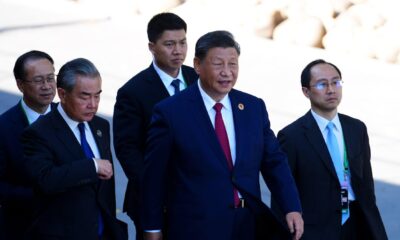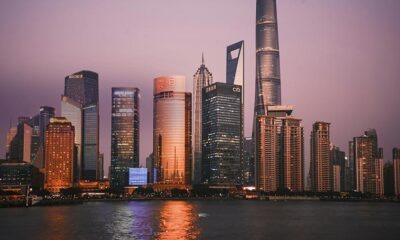Asean
Inequality in South Korea
Author: Hagen Koo, University of Hawai‘i at Manoa
Park Geun-hye, the current president of South Korea, pledged to rebuild the middle class and increase its size to 70 per cent of society, as part of her 2012 campaign. South Korean observers agree that this was an effective political strategy which greatly contributed to her election. In South Korea, as in many advanced economies, a major political discourse has emerged over economic polarisation and the declining middle class.

This is a far cry from the situation of two or three decades ago. South Korea is one of the ‘gang of four’ East Asian countries that achieved rapid economic growth while maintaining a relatively equitable income distribution. By the early 1990s, South Korea’s middle class had expanded vigorously, with as much as 70 per cent of the population identifying themselves as belonging to the middle class.
But this began to change in the mid-1990s. The major turning point was the Asian financial crisis that arrived in South Korea in 1997. It had devastating consequences for the economy and for the livelihoods of the working population. A huge number of people suffered from layoffs, early retirements and business failures, and many middle-class people experienced downward mobility. But the consequences of the financial crisis were uneven. While the majority of working people suffered tremendously, those who possessed financial resources took advantage of credit-scarce market conditions and came out of the crisis richer than before.
So, economic inequality increased noticeably during and after the crisis. South Korea’s average Gini coefficient — a measure of inequality — for 1990–1995 was 0.258, but with rising inequality its coefficient increased to 0.298 in 1999, two years after the onset of the financial crisis. It continued to increase, reaching 0.315 in 2010.
The same trend can be seen in income distribution: the share held by the top 10 per cent of income holders divided by that of the bottom 10 per cent has increased from 3.30 in 1990 to 4.90 in 2010. The income share of the top 1 per cent of the income pyramid was 16.6 per cent of national income in 2012.
The major sources of increasing income inequality are closely related to the neoliberal transformation of the South Korean economy. The neoliberal reform of the labour market over the past decade and a half produced a sharp cleavage between regularly employed workers on standard contracts and irregularly employed workers (those who are limited-term, part-time, temporary or dispatched). The latter group increased from 27.4 per cent of the working population in 2002 to 34.2 per cent in 2011. This means that approximately one third of South Korean workers suffer from insecure job conditions, receiving only around 60 per cent of regular workers’ wages with no medical insurance, severance pay or company welfare subsidies. The South Korean working class, which used to be relatively homogeneous in terms of the job market and wage conditions, has become internally divided — and this reflects growing income inequality in South Korea.
Another source of inequality is the changing salary system adopted by large South Korean firms. Since the late 1990s, a general trend among South Korean firms has been to discard the old seniority-based salary system and adopt the American style ability-based salary system. With this change, the wage gap between professional and managerial workers and the rest of the workforce has widened greatly. As the South Korean economy has moved towards being knowledge-based, the value of scarce skills and knowledge has increased and globalised business sectors have begun to offer extremely high salaries to attract talent.
Furthermore, in recent years, the significant income disparities that have long existed between South Korea’s conglomerate firms and medium to small-sized firms have become even greater in recent years. South Korea’s top 1 per cent of income earners are most likely to be employed in the leading South Korean conglomerates, like Samsung, Hyundai and LG, which have grown into truly world-class companies and become very profitable.
Finally, in South Korea, as in most societies, wealth inequality is much larger than earned income inequality. In 2012, the top 10 per cent of the population possessed 46 per cent of the country’s total wealth. The bottom 50 per cent possessed only 9.5 per cent. This wealth inequality initially developed during the earlier period of rapid economic growth (1970s–1980s) and emerged primarily from the booming real estate market. But in recent years, the stock market and other financial investments have replaced the real estate market as the major means of wealth accumulation.
The prospects for declining economic inequality in South Korea in the near future are very dim. Despite her campaign pledge, Park Geun-hye has done little to attack institutional sources of widening inequality like tax policies, the dualistic labor market or welfare policies. The most recent statistics released by a government source indicates that as much as 73 per cent of Seoul residents identified themselves as belonging to the ‘lower middle class’ or ‘lower class’.
Hagen Koo is a Professor of Sociology at the University of Hawai‘i at Manoa.
This article is part of an East Asia Forum miniseries examining inequality in Asia.
See the rest here:
Inequality in South Korea
Asean
Deadly Floods and Landslides Strike Indonesia and Thailand – Vietnam Plus

At least seven people were killed, two others were injured and some were likely to be missing after flash floods and landslides hit the Indonesian eastern province of Maluku on the morning of August 25, according to the locality’s disaster management and mitigation office.
Heavy rainfall, which began on August 24, has triggered the disasters in Ternate city. Many local residents are in urgent need of support, authorities said.
Soldiers, police, local search and rescue personnel, disaster management staff, and volunteers are all involved in the ongoing rescue efforts, which include evacuating those trapped by the landslides and recovering materials from homes swept away by the floods.
Meanwhile in Thailand, local authorities reported that the death toll from a landslide in the popular resort province of Phuket on August 23 has risen to 13, including a Russian couple.
Source : Floods, landslides kill many in Indonesia, Thailand – Vietnam Plus
Asean
Tug of War in Southeast Asia: Can ASEAN-China Dialogue Shift the Scales Toward Peace? – An Analysis

The ASEAN-China dialogue is vital for regional stability, addressing economic cooperation and security challenges, particularly in the South China Sea, amidst significant geopolitical complexities and ongoing territorial disputes.
ASEAN-China Dialogue: A Path Towards Cooperation
The ASEAN-China dialogue plays a pivotal role in Southeast Asia’s diplomacy, fostering economic collaboration while addressing security challenges. Despite advances, particularly in managing tensions in the South China Sea, significant barriers remain to achieving lasting peace and stability in the region. ASEAN’s capacity to maintain its unity and centrality is crucial amidst complex power dynamics involving China and other global players.
Navigating Tensions and Economic Relations
A pressing concern within this dialogue is the South China Sea territorial disputes, which involve multiple ASEAN states and China. The militarization of the area raises alarm among regional stakeholders, necessitating urgent negotiations for a Code of Conduct (COC) to manage conflicts. Additionally, the growing economic interdependence fostered by initiatives like the Regional Comprehensive Economic Partnership (RCEP) strengthens ASEAN-China ties, yet it also raises concerns about potential political leverage influencing member states’ autonomy.
The Challenge of Regional Stability
While the ASEAN-China dialogue offers a framework for promoting peace, its effectiveness is conditioned by broader geopolitical contexts, including China’s rivalry with the United States. The success of this dialogue rests on sustaining a commitment to multilateralism and peaceful dispute resolution. As ASEAN adapts to these complex dynamics, it must reinforce its unity and cooperative strategies, ensuring the region’s stability amid evolving challenges.
Source : Tug Of War In Southeast Asia: Will ASEAN-China Dialogue Tip The Balance Towards Peace? – Analysis
Asean
Cambodia Invites Business Leaders to Join the 21st China-ASEAN Expo in Nanning

Cambodia invites businesspeople to the 21st China-ASEAN Expo in Nanning, promoting trade and investment with incentives like hotel coupons and networking opportunities in various sectors.
Cambodia Invites Participation in CAEXPO 2024
Cambodia is actively encouraging business leaders, investors, and service providers to participate in the upcoming 21st China-ASEAN Expo (CAEXPO), set to take place from September 24-28 in Nanning, China. According to a Ministry of Commerce announcement, CAEXPO serves as a vital platform for trade and investment collaborations between ASEAN nations and China.
To facilitate Cambodian participation, the Ministry invites interested individuals to apply as Trade Visitors by August 31, 2024. Participants will benefit from hotel coupons, dining vouchers, and shuttle services to the expo venue. Furthermore, attendees can engage in business matchmaking in sectors such as food processing, digital technology, and renewable energy products.
Kin Phea, from the Royal Academy of Cambodia, emphasized the advancements in China-ASEAN relations, particularly concerning economic cooperation, tourism, and cultural exchanges. He noted that both sides have become each other’s largest trading partners, enhancing collaboration through the Belt and Road initiative, focusing on infrastructure and sustainable development.
Source : Cambodia encourages businesspeople to partake in 21st China-ASEAN Expo in Nanning












